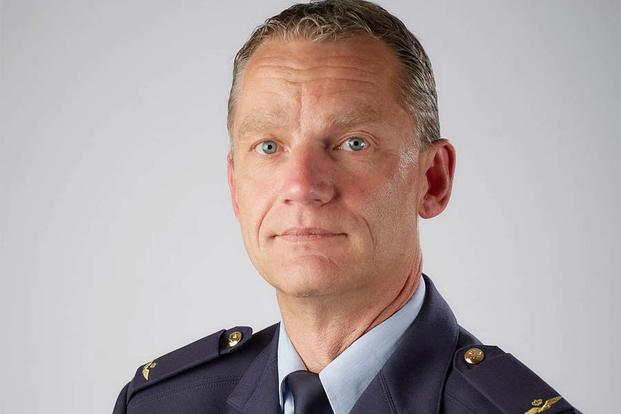A NATO air chief says he's concerned by Russia's increasing deployment of surface-to-air missile systems in and around Europe.
"I'm concerned about the fact that these kinds of systems as were mentioned here -- the proliferation of those systems -- is really expanding, and I think that's something as not just air forces but as a joint force we need to be concerned about," said Lt. Gen. Dennis Luyt, commander of the Royal Netherlands Air Force.
Luyt's comments came Monday at the Air Force Association's annual Air, Space & Cyber conference held outside Washington, D.C. He appeared on a panel alongside Gen. Tod Wolters, commander of U.S. Air Forces in Europe, and Maj. Gen. Max Nielsen, chief of staff of Denmark's defense command.
In recent years, the Russian military has deployed S-300 and S-400 surface-to-air missile (SAM) systems not only within Russia and Kaliningrad, the Russian city in a territory between Poland and Lithuania, but Crimea and areas encircling the Ukraine, and even Latakia, Syria.
Check out Military.com's coverage of the AFA's Air, Space & Cyber conference.
The S-300 has a range of up to 200 kilometers (125 miles); the S-400 up to 400 kilometers (250 miles). Both systems are designed to target any number of U.S. and NATO aircraft, from bombers to fighters to spy planes.
"Russia has altered the security balance in the Black Sea, Eastern Mediterranean and Middle East by establishing large anti-access/area-denial (A2AD) exclusion zones," Kathleen Weinberger, a researcher with the Washington, D.C.-based Institute for the Study of War, wrote in a recent infographic on the systems.
"Advanced air defense systems create A2AD 'bubbles' that prevent Russia’s opponents from establishing air supremacy in strategically significant theaters," it states. "Russia can use these systems to impede the ability of the U.S. to defend its NATO allies by disrupting the ability of US air forces to access conflict zones in the event of a crisis."
At the conference, Luyt, the Dutch general, added, "I also think cyber plays a very large part in those answers. And I think, from my own experience, it's also worthwhile to educate our land and naval brothers because I notice in my conversations about these kinds of threats … that there's too little awareness in the other domains about what this threat means."
"The fact is that as a land unit or a naval unit, you will operate in contested battlespace," he said. "And what I've noticed is that we have forgotten what it's like to work in contested battlespace because the norm has been operations over Afghanistan … in Africa and even now in the Middle East, [where] it's a totally different situation."
Wolters, meanwhile, said the approach U.S. and NATO allies are embracing to the surface-to-air missile threat "boils down to relentless training."
"As long as we continue our relentless approach to training, it will serve as an invaluable deterrent against an aggressive actor to the East that has a tendency to throw some of these systems into the field," he said.
"So I contend that one of our best mitigators in this area has to be the fantastic cooperation that exists with our alliance and the fact that our Nordic region, our Baltic region, our central region and our southern region are all ready to engage in accelerated training against threats that possess the capabilities of S-300s and S-400s," Wolters said.
Nielsen said a long-term answer to the issue of Russia's SAM emplacements will have to be "a Russia that is part of the European community."
-- Brendan McGarry can be reached at brendan.mcgarry@military.com. Follow him on Twitter at @Brendan_McGarry.
























